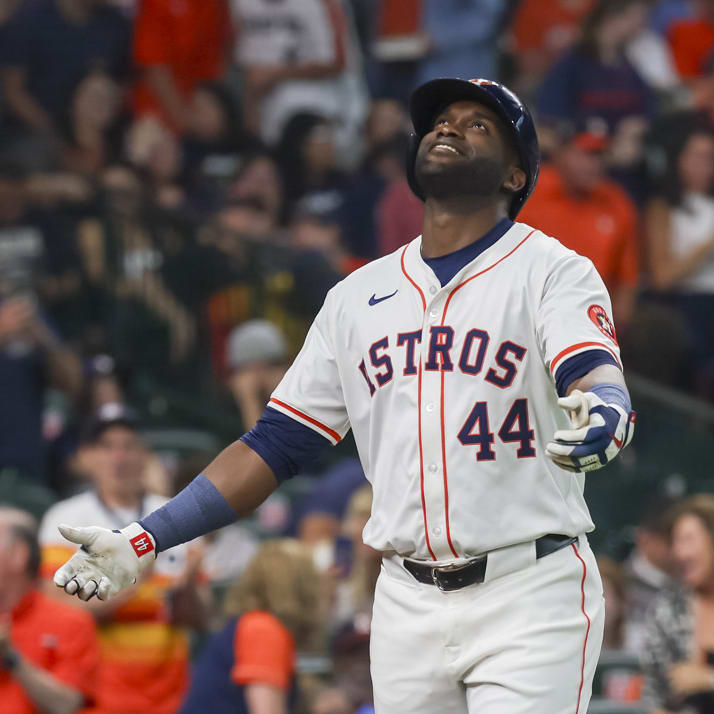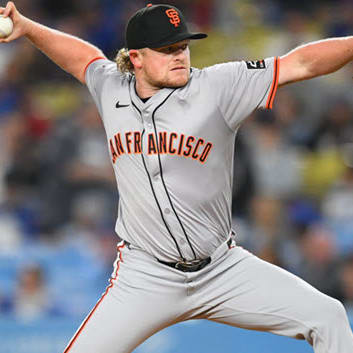This article is part of our Stathead Sagas series.
A couple of weeks ago, Mock Draft Central hosted a 12-team mixed league rest-of-season mock draft. We can make new rankings and new cheatsheets, but I think there's an excellent argument to be made that a mock draft, with the way decisions between certain players and certain positions are forced, makes for an excellent re-ranking of players accounting for the first two months of the season.
The results of the draft can be seen here. The strategies of each individual drafter varies. Some stick to players who they expected to succeed in the preseason. Others ride the hot hand. For many, it all depends on the player – the name, pedigree, and playing time situation all factor in.
What we want to find out through a deeper examination of this draft is if any significant patterns emerge. If we can get a beat on these patterns of how player valuation changes within just two months of play, we can get a significantly better idea of how the trade market works. On top of that, if these experts are worth their salt, we can get an idea of which players to target over the final two-thirds of the season.
Of the factors mentioned – present performance, preseason value, and individual situation – the former two are measurable in an easily comparable fashion: auction dollar values. We offer both preseason and in season dollar value lists on the site, and those will be the primary tools in this analysis as we answer a couple of questions.
Which do experts value more on June 1: preseason value or current season value?
Comparing draft picks to auction values is an imperfect science, but there is a workable approximation: assign dollar values to picks based on the results of auction drafts. I used the results of a few standard-league mock drafts I found on The Internet to assign the pick values; what's more important than the actual numbers is the general shape of the pick assigning. Here's what I used:

It's a top-heavy valuation, but I think that goes well with the spirit and execution of snake drafts – picks at the top matter much more than the individual picks in the final rounds.
Now, by running a multiple regression on the current dollar value and the preseason dollar value, I find the values a1, a2 and b that best fit the following equation:
Pick Value = (Preseason Value)*a1 + (Current Value)*a2 + b
The regression spits out the following values: a1 = 0.61, a2 = 0.33, b = 3.6, with a strong r-squared of 0.66.
In English, I can say with a pretty good degree of certainty that us experts in this mock draft valued preseason value just under two times more (1.84, to be precise) than current season value, with the intercept of 3.6 indicating that we are generally optimistic on the 276 players we drafted – if a player has both a current value of $0 and a present value of $0, we're "paying" $3.6. Maybe we're dumb. Maybe as experts we have a good grip of the intangible parts of value. That's up to you. I prefer the latter.
At least in my ideal world, we'll do another draft in a month or so and see what kind of progression we get as the season goes on. When do we reach the point where we value in-season performance and preseason projections equally? I would imagine it comes somewhere around the All-Star break, but with the (proper) drilling of the importance of sample size into our skulls, it may be even later.
Which different groups of players pop up?
Observe, one way of visualizing what happened in this draft:

Each player is plotted according to preseason value (horizontal) versus current value (vertical), with the size of each point corresponding to the pick value he was drafted at. The black line represents all points where preseason value is equal to current value, and much of the points (speaking to our projections) cluster around this line. Those picks aren't terribly interesting – they're the ones that have hardly changed in value as the season has gone on.
The three highlighted zones are where the action is happening. The first shows players who had lofty preseason expectations, haven't met them, and yet are still going high in the draft. The second shows players who have bested poor projections to find high spots in our redraft. The third shows a group of players living off name, pedigree, or role – these players had little hope in the preseason and have done nothing of note so far through the regular season, but something about their situation inspires hope in our drafters.
Group 1
A few of these players have failed to perform due to injury. The bottom-right corner is Jacoby Ellsbury, who has hardly played this season but went 67th in our draft – he'll come back around the All-Star break and there's little reason to believe he won't be a great player upon that return. Similarly, we have Mike Morse, Brett Gardner, Roy Halladay, Troy Tulowitzki, Desmond Jennings, Evan Longoria and Pablo Sandoval belong to this group – all players either currently injured or injured earlier in the season.
But then there are also the stragglers. Cliff Lee, who hasn't won a single game yet. Tim Lincecum, who has a whole host of problems. Alex Gordon, Adrian Gonzalez, Albert Pujols, Brett Lawrie, Ryan Zimmerman, Jon Lester, and Eric Hosmer are players that this group of experts still believes in – their hype and history hasn't been wholly undone by rough beginnings to the season, and despite the idea that you might be able to buy these players low, chances are their owners would still drive a hard bargain.
Group 2
These are the breakouts we're believing in. A good number of players on the "good" side of the line are going in the far later rounds, as are a few of these players, indicating a disbelief in their hot starts. But those with big dots in this region are those the experts are "buying high" on.
They include Melky Cabrera, Carlos Beltran, Jason Kipnis, Mark Trumbo, Edwin Encarnacion, Mike Trout, Yadier Molina, Adam Dunn, Alejandro De Aza, Jose Altuve, Chris Sale, Lance Lynn, Carlos Ruiz, Jake Peavy, Aroldis Chapman, Bryce Harper, Fernando Rodney, Omar Infante and Mike Aviles. These range from former success stories returning to form to breakout prospects to closers finding a role to talented position players taking hold of a starting spot.
It's not as if all the breakout stories have their believers. Perhaps some believe in R.A. Dickey, but he went 195th in this draft. Rafael Furcal and his large injury past went 179th. Chris Capuano went 193rd and A.J. Pierzynski went 171st. If you're looking to sell high, chances are owners will be far more likely to bite on the first group than those listed in this paragraph.
Group 3
These are the players getting drafted more on intangibles – role or pedigree, typically – than past or current performance. The "stars" of this group are Addison Reed, Carlos Quentin, Carlos Pena and Doug Fister – a closer, a "name" guy (whom I picked) whose value is much higher if he gets traded, a one-dimensional power hitter and an injured player who likely wouldn't have value outside of Detroit.
This group also includes prospects who could see significant time and impact in the second half: Wil Myers, Trevor Bauer and Anthony Rizzo. Mostly, though, it's populated by the catchers necessary to fill that second catcher spot, like Devin Mesoraco, Russell Martin and Steve Clevenger. There's some closer speculation – Drew Storen, Sergio Santos, Carlos Marmol, David Robertson, Huston Street – as well. These are the filler types to plug roster needs at the end of the bench.
It's entirely possible I'm making too much out of one mock draft. However, it's rare to see experts get to divorce themselves from their own entrenched teams – where they will almost certainly overrate their own players and underrate those of opponents – and value players in this sort of arena. At the least, it's more information, and more information (when used properly) never hurt anybody.












